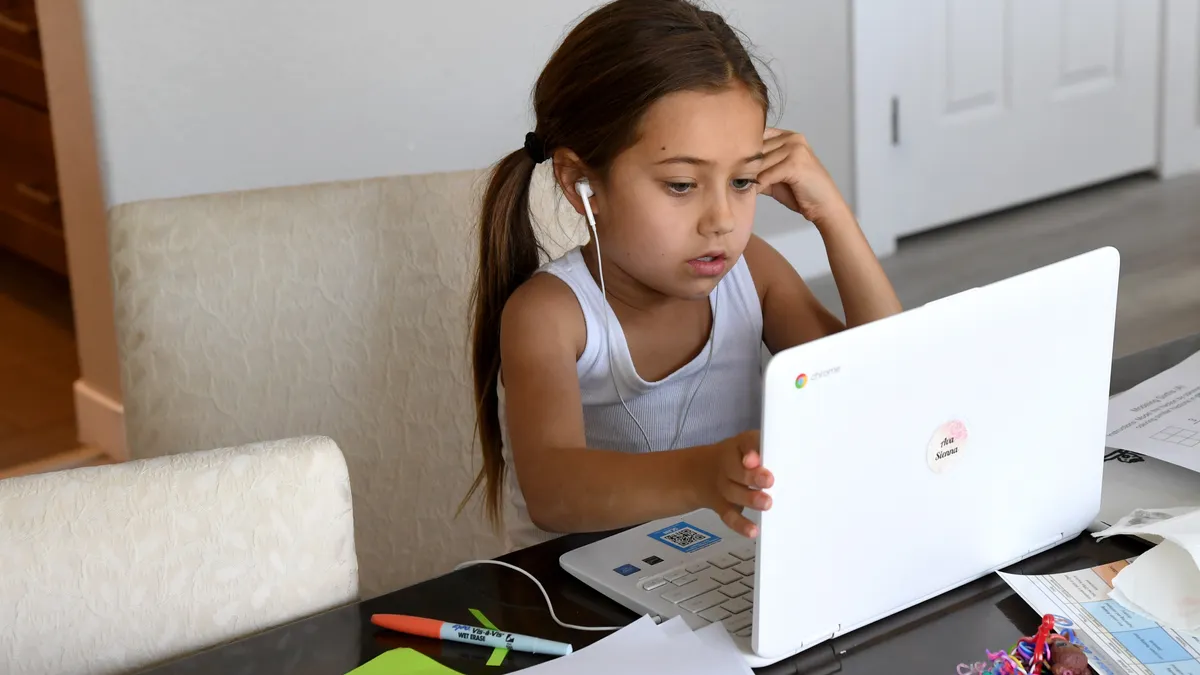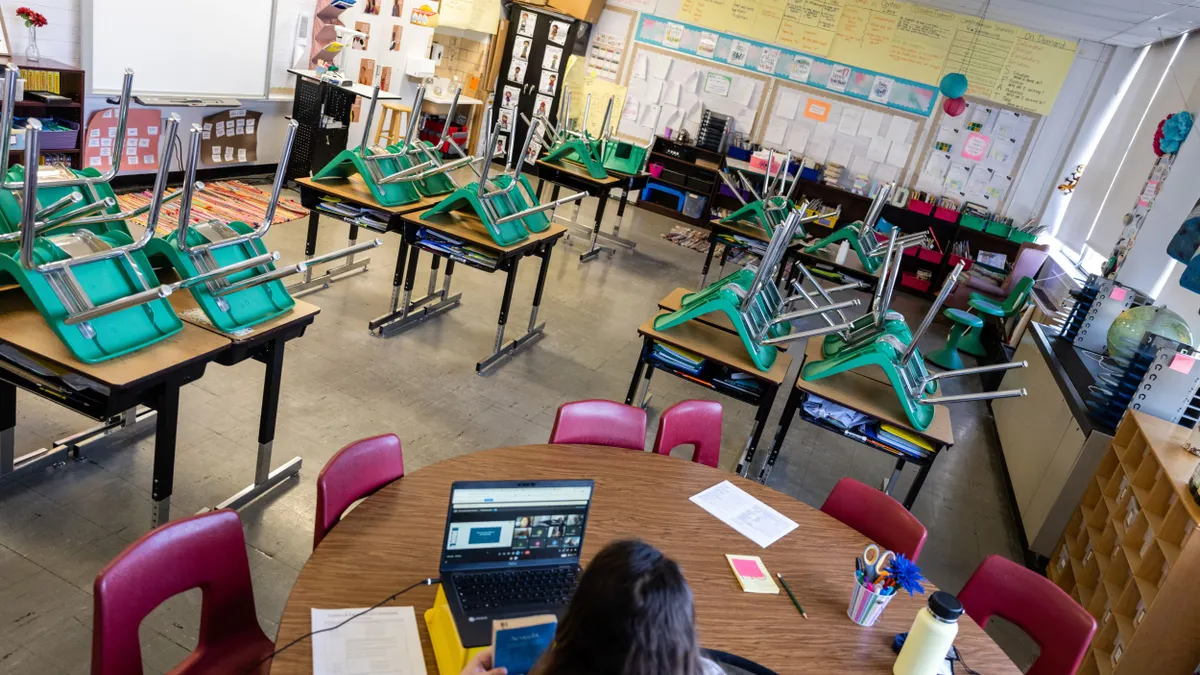Ronald Chaluisán Batlle is executive director of the Newark Trust for Education, an independent nonprofit focused on improving public education delivery and accountability.
After educators and researchers presented post-pandemic testing data that showed a decline in student performance levels, journalists and elected officials popularized the term "learning loss." Educators then introduced "unfinished learning," replacing the term used to describe the most significant issue facing American education today. No matter what you call it, it's time to rethink this idea.
Research and educators have shown learning loss is not uniform across student groups or regions and is disproportionately affecting Black and Latino students. The pandemic made visible what was previously invisible to some.
In the pandemic, the education system was not able to teach many students effectively. For many students, it has never done so.
In understanding the three ways learning loss is framed and acknowledging the inequities that framing reveals, we can create safe, supportive and equitable environments where students and teachers can apply the skills and expertise developed while navigating uncharted territory during the past two years, learn new material effectively, and compensate for the opportunities the system failed to provide.
Learning loss types and solutions
Type 1: Equity-driven learning loss
The first way in which learning loss is applied pertains to a student group’s relatively low achievement level when compared to unlike groups, such as what we’ve experienced in New Jersey schools. Here, learning loss is defined as the lower performance level of "low-income students of color," compared to "their wealthier peers in majority-white schools."
In this definition, learning loss is determined by comparing cohorts of students in the same grade at different locations during the same period in an academic year. These differences are not new: The pandemic merely exposed them.
Students in majority-Black schools were an average of nine months behind on math compared to their peers in majority-White schools prior to the pandemic. They are now a full 12 months behind, according to a McKinsey & Company analysis.
Solution: Address equitable conditions for learning
To fully understand the issues presented by this category, we must explore and consider the assumptions made when making comparisons.
In the first category of learning loss, assumptions are that the groups of students under comparison have access to similar quality and types of learning experiences. This includes quality teaching, adequate support and appropriate technology. It is also assumed these experiences should lead to comparable outcomes.
When learning environments are similar, we should explore and work together to identify and secure the additional supports struggling students need to succeed. These supports might include the selection of culturally relevant curriculum materials, adjustments to the rules guiding adult-student interactions, or modification to the types of assessment opportunities.
If the settings are not comparable, we must take action to establish and maintain equitable conditions for learning. This may include:
- Organizing improvements to technology infrastructure through parents groups, local government and the businesses community, and making full computers available to learners, not just Chromebooks.
- Working with the same groups, as well as urban and rural farmers in the region, to bolster nutrition education and access to healthier foods.
- Offering free school breakfasts and lunches.
- Ensuring safe and supportive learning environments.
Type 2: Unanticipated learning loss
The second type refers to groups of students who achieve at unanticipated low achievement levels in comparison with the historical achievement of similar groups.
Reading comprehension, writing, mathematics and other skills are compared with previous results of similar groups to demonstrate progress or regression in teaching and learning. In the absence of a significant event (e.g., a pandemic), educators and parents alike are challenged to find the root cause of these variances, which can sometimes take months or even years.
According to research conducted by Amplify, specific to reading, "The percentage of students far behind at midyear increased (as compared to last year) across all grades, with the biggest learning losses evident in Grades K and 1."
It goes on to explain, "Last year, 26% of Grade 1 students were ‘well below benchmark’ (the lowest category) in early literacy skills. This year, it was 43%. Similar to Grade K, that is a 65% increase in the percentage of Grade 1 students at greatest risk for not learning to read.”
Solution: Address changes to the ecosystem
For the second scenario, it is essential to understand the stability of the learning ecosystem, including the profile of students in the cohorts being compared. Understanding the differences in learning outcomes requires asking what systemic changes have taken place.
For this purpose, districts should document their histories and personnel changes, curriculum changes, assessments, physical changes and issues within their communities.
As the issues can help identify the causes of variance in learning, it is crucial to examine physical and mental health trends (including suicides), environmental concerns, drug and alcohol usage, teacher turnover and class size changes. We must also consider changes in leadership, modifications to curriculum, adaptations to teaching methods and the use of new assessments.
Finally, we must determine whether the education system maintained rigor in the learning process and provided adequate resources to all students. By exploring this honestly and tracking these shifts, we can understand how best to reconstitute safe and supportive learning environments.
Once the causes are identified, we can weigh relevant solutions that can be applied to the environment to support groups of students and/or individual learners.
Type 3: Individual learning loss
In the third category of learning loss, an individual's performance over time decreases as compared to previously learned material. The researchers who conducted the Beginning School Study, which sparked the summer learning loss controversy, followed "the same participants over time to explore links to later trajectories of personal and academic development."
It differs from other frames in that it assumes a student has already mastered material rather than that he or she should have learned it.
Solution: Address the curriculum and the assessment system
In the third scenario, we must ask “Why?”
As educators, we need to question why we teach the subjects and skills we do today, including relevance and how we assess mastery. Learners do not integrate content and skills when they do not understand the relevance of the materials. They tend to lose competency when they do not interact with content on a regular basis. Also, they lose proficiency when they have no need to practice particular skills.
To claim a reduced level of achievement over time, we should be certain students had mastered the material in the first place. We would have to show we were successful in demonstrating the relevance of the material to the students, and that we identified, created and provided regular opportunities for students to put their knowledge into practice.
Additionally, we must work with caregivers to ensure reinforcement between the home and school. The data shows the importance of parental involvement and the need for establishing realistic expectations, imperatives that must be addressed.
In exploring potential reasons for the learning loss in the Beginning School Study, parents of the participants informed the researchers about family structure and family changes, their occupations and education, their expectations for their child's schooling and school performance, their feelings about the school, and their understanding of its evaluation procedures.
If we are not confident we have achieved these conditions, we must revise our core content, rethink our assessment processes and improve family engagement.
Looking Ahead
Educating children is one of the most important responsibilities we have as adults. In the wake of this pandemic, we need to address the inequity communities of color face, and until such time, we will not be able to claim success. The system is not effectively educating too many students right now, and for too many students, it never has.
We cannot cover the pandemic's short-term effects alone, because the challenges it highlights are part of a wider socio-economic issue that has created inequitable conditions. The idea of labeling students as having "learning loss" or "unfinished learning" obfuscates systemic inequities, shifting the focus from the system to students.
To ensure significantly more Black, Latino and poor youth succeed, we must prioritize, work together and take risks for them to have equitable access to safe, supportive, rigorous learning opportunities.
This may mean changing curricula, implementing steps to create safe and supportive learning environments, learning the signs of mental health issues, and having free or affordable resources to address them. It will likely mean adopting new assessments so kids are not penalized for learning loss that’s not their fault.
The three ways in which experts define learning loss or unfinished learning, taken together, provide a comprehensive understanding of what we can do to create a more equitable education system across a variety of school systems, within school systems, and with individual students.



















